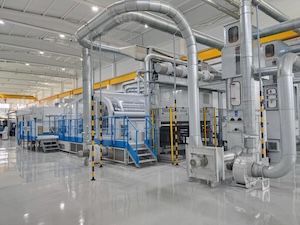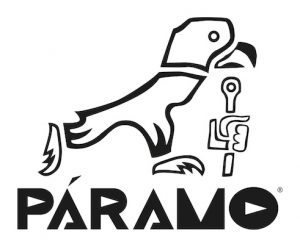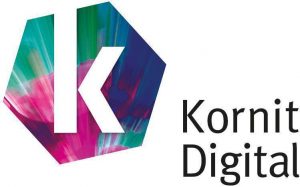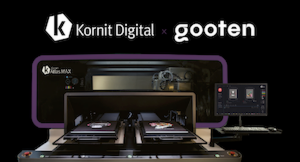 CARY, N.C. — May 8, 2025 — The winners of the 2025 IDEA® Achievement Awards and FiltXPO™ Innovation Awards were announced during special ceremonies held April 29 and 30 at the Miami Beach Convention Center in Miami Beach, Florida.
CARY, N.C. — May 8, 2025 — The winners of the 2025 IDEA® Achievement Awards and FiltXPO™ Innovation Awards were announced during special ceremonies held April 29 and 30 at the Miami Beach Convention Center in Miami Beach, Florida.
 Presented at the collocated IDEA25 and FiltXPO 2025 events, the awards celebrate outstanding innovations driving progress in nonwovens and filtration. INDA, the Association of the Nonwoven Fabrics Industry, collaborated with International Filtration News for the FiltXPO Awards and Nonwovens Industry magazine for the IDEA Achievement Awards.
Presented at the collocated IDEA25 and FiltXPO 2025 events, the awards celebrate outstanding innovations driving progress in nonwovens and filtration. INDA, the Association of the Nonwoven Fabrics Industry, collaborated with International Filtration News for the FiltXPO Awards and Nonwovens Industry magazine for the IDEA Achievement Awards.
“The recipients of the IDEA and FiltXPO Awards exemplify the ingenuity and forward-thinking that drive our industries forward,” said Dr. Matt O’Sickey, director of Education & Technical Affairs, INDA. “Their groundbreaking products are not only shaping the future of nonwovens and filtration — they are redefining what’s possible. These innovations remind us that progress is built on vision, persistence, and a commitment to solving the challenges of tomorrow.”
“The International Filtration News is proud to sponsor the FiltXPO Filtration Awards. These award-winning innovations, and the honored nominees, are more than technical achievements — they’re powerful solutions advancing performance, sustainability, and the future of our industries. Each represents the kind of forward-thinking impact that we cover in our FiltNews pages, which keeps nonwovens and filtration at the forefront of meaningful change,” said Caryn Smith, IFN publisher and chief content officer.
“Both the finalists and the winners of this year’s IDEA Innovation Awards truly reflect how strong innovation is across the entire nonwovens supply chain,” said Karen McIntyre, editor, Nonwovens Industry. “Nonwovens Industry is proud to once again partner with INDA to support and honor the companies working hard every day to advance our industry and create new solutions to better serve the needs of both people and our planet.”
IDEA® Equipment Achievement Award
Dilo Systems GmbH – MicroPunch
The rising energy costs and water shortages have led to a re-evaluation of production methods, with a stronger focus on environmental impact. With MicroPunch, it is possible to reduce energy consumption by approximately 75 percent compared with other consolidation techniques that produce lightweight nonwovens. This technology enhances efficiency and reduces the manufacturing costs and the environmental footprint.
IDEA® Nonwoven Products Achievement Award
Innovatec Microfibre Technology GmbH & Co. KG – InnovaWipe® Water-Soluble Nonwoven
This water-soluble nonwoven is completely biodegradable under both aerobic and anaerobic conditions. It offers excellent resistance to oils, greases and chemicals. It does not leave any microplastics behind, breaking down into carbon dioxide, water and biomass. It also has no ecotoxic effects, is safe for the marine environment and does not cause fatbergs or blockages in wastewater systems — flushable and home compostable.
IDEA® Raw Materials Achievement Award
Woolchemy NZ Ltd. – neweFibre
Woolchemy’s neweFibre is the world’s first hygiene-grade wool, engineered for high-performance, sustainable hygiene products. This fully traceable, renewable fiber enhances moisture management, thermal comfort, and odor control. Seamlessly integrating into production, neweFibre powers innovations like neweFlex ADL for exceptional fluid distribution and skin dryness.
IDEA® Short-life Achievement Award
Egal Pads Inc. – Egal™ Pads on a Roll
At Egal, we believe pads should be as common as toilet paper. Our vision is that “pads on a roll” will be put in every toilet stall — where they are needed most — to ensure privacy and dignity to all who menstruate. Egal pads are manufactured in roll form, 40 individually wrapped on each roll, so they can be mounted on existing toilet paper dispensers or in Egal’s custom-designed dispensers.
IDEA® Long-life Achievement Award
Magnera – Sontara® EcoRE Bag
EcoRE bags are produced entirely from cellulosic fibers, presenting a sustainable alternative to traditional synthetic materials. Made with Sontara fabric certified by OK compost HOME, these bags maintain their durability and strength without the need for added binders, addressing a common concern with compostable goods. With plastic bag bans now in place in many states, Sontara offers a timely and eco-friendly solution for the retail and shopping market.
IDEA® Sustainability Advancement Award
KINDCLOTH™ – PURA HEALTH Insect Repellent – Water Dissolvable Wipes
This wet wipe combines water-dissolvable Hydropol™ technology with a natural formula featuring lemongrass and citronella. Designed for eco-conscious consumers, this innovative wipe provides effective insect protection while leaving no waste behind. Certified biodegradable, flushable, and designed not to create harmful microplastics, it safeguards fragile ecosystems and supports sustainability goals.
IDEA® Entrepreneur Award
Dude Products Inc.
In less than a decade, the Dude Wipes brand has grown from an entrepreneurial concept conceived in a bachelor’s post-college apartment to a more than $200 million global brand. These flushable wipes have flourished in flushable wipes industry, successfully going head to head against multinational consumer product companies Kimberly-Clark, S.C. Johnson, and Procter & Gamble.
FiltXPO Air/Gas Filtration Award
Greentech Environmental LLC – Greentech Filters with ODOGard®
ODOGard® technology deeply integrates odor-neutralizing polymers into nonwoven and nanofiber filters, offering an innovative, non-toxic approach to indoor air quality. ODOGard significantly enhances filtration durability and performance.
FiltXPO Water/Liquid Filtration Award
Ahlstrom – BioProtect™
Ahlstrom’s sustainable BioProtect™ material offers superior dye-catching performance for laundry applications. Manufactured from 100 percent naturally derived fibers and OC-Biobinder®, BioProtect is both biobased and home compostable, combining premium performance with environmental responsibility.
FiltXPO Filtration Equipment Award
Filtration Advice Inc. – FA-TCO Software
This cutting-edge software provides comprehensive Total Cost of Ownership (TCO) analysis and predictive modeling for air filtration systems. FA-TCO enables data-driven decisions, extending filter lifespans, reducing operational costs, and enhancing overall sustainability in filtration management.
Posted: May , 2025
Source: INDA, The Association of the Nonwoven Fabrics Industry
 CARY, N.C. — May 7, 2025 — INDA’s IDEA®25 and FiltXPO™ 2025, held concurrently from April 29 to May 1 at the Miami Beach Convention Center, delivered unparalleled value to the nonwovens and filtration industries.
CARY, N.C. — May 7, 2025 — INDA’s IDEA®25 and FiltXPO™ 2025, held concurrently from April 29 to May 1 at the Miami Beach Convention Center, delivered unparalleled value to the nonwovens and filtration industries.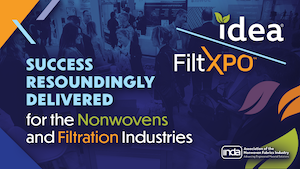 Combining exhibitions, conferences, training opportunities, and awards, these co-located events served as essential global platforms to drive business growth, share knowledge, and advance the industry.
Combining exhibitions, conferences, training opportunities, and awards, these co-located events served as essential global platforms to drive business growth, share knowledge, and advance the industry.








